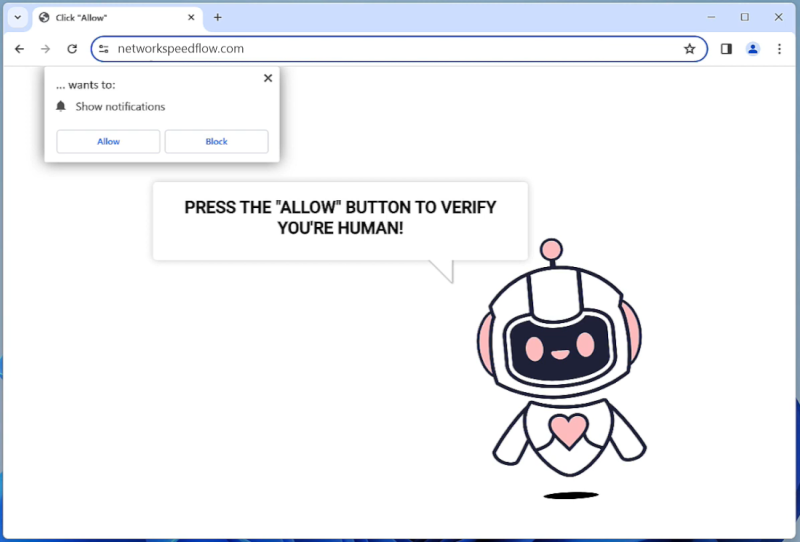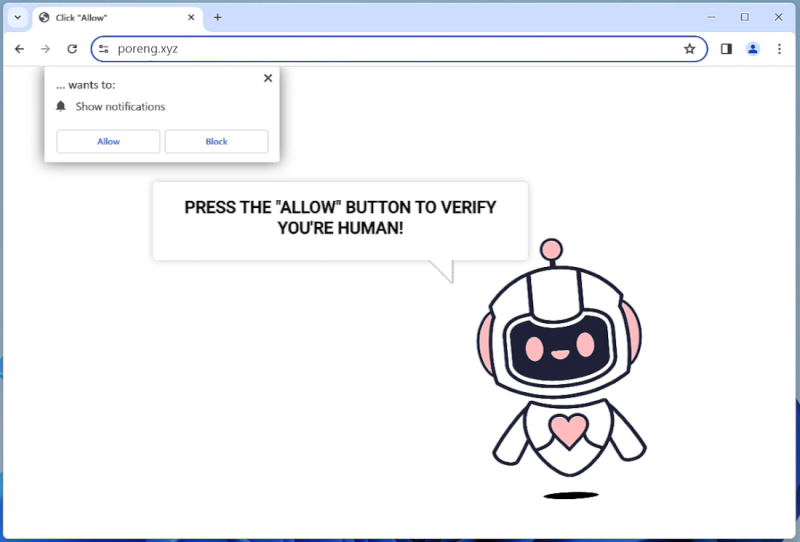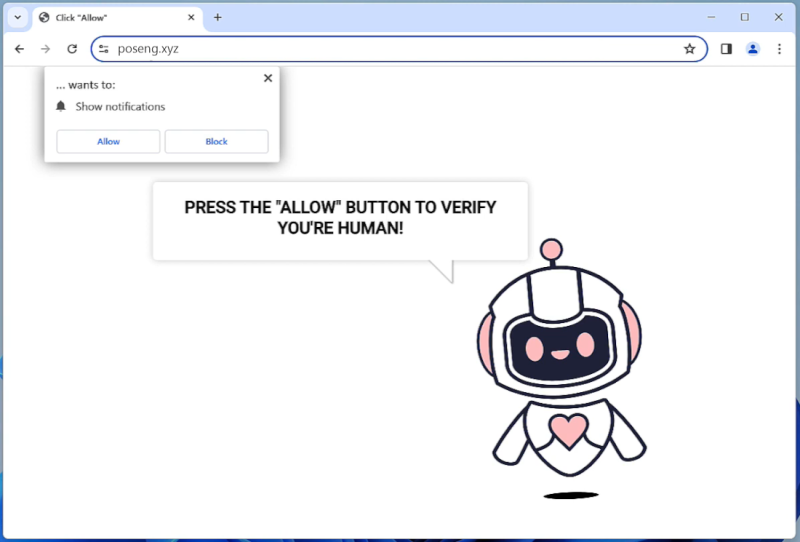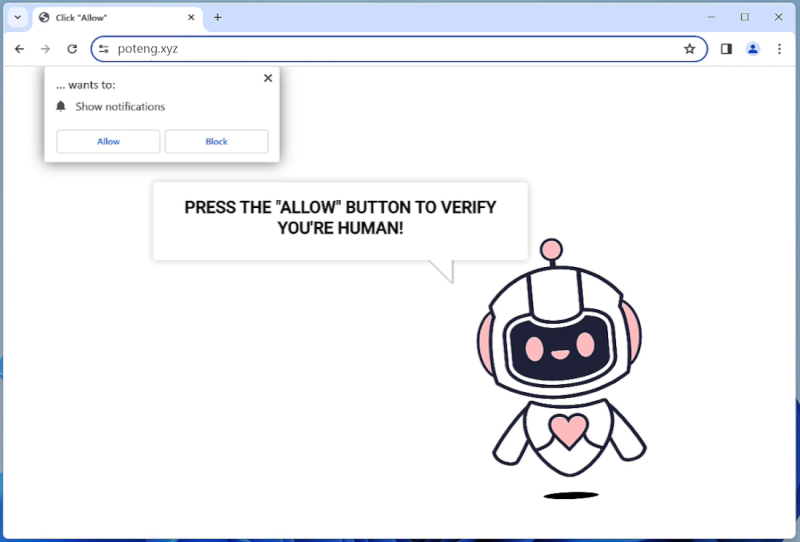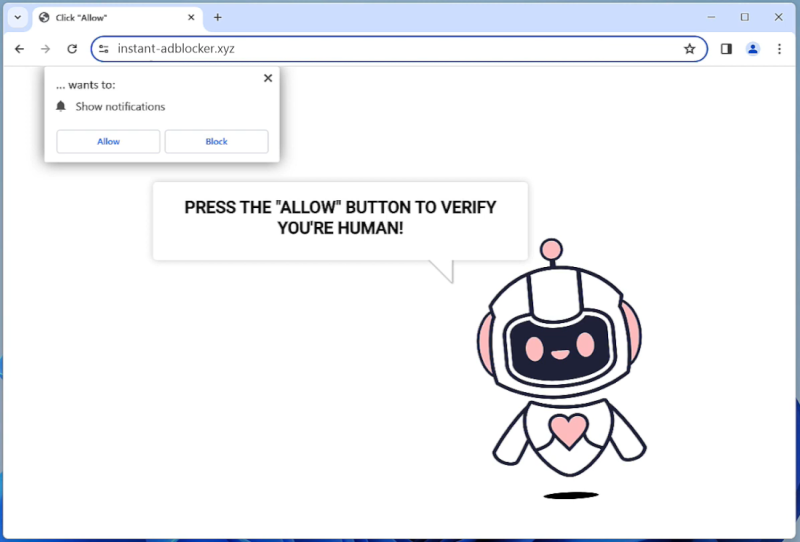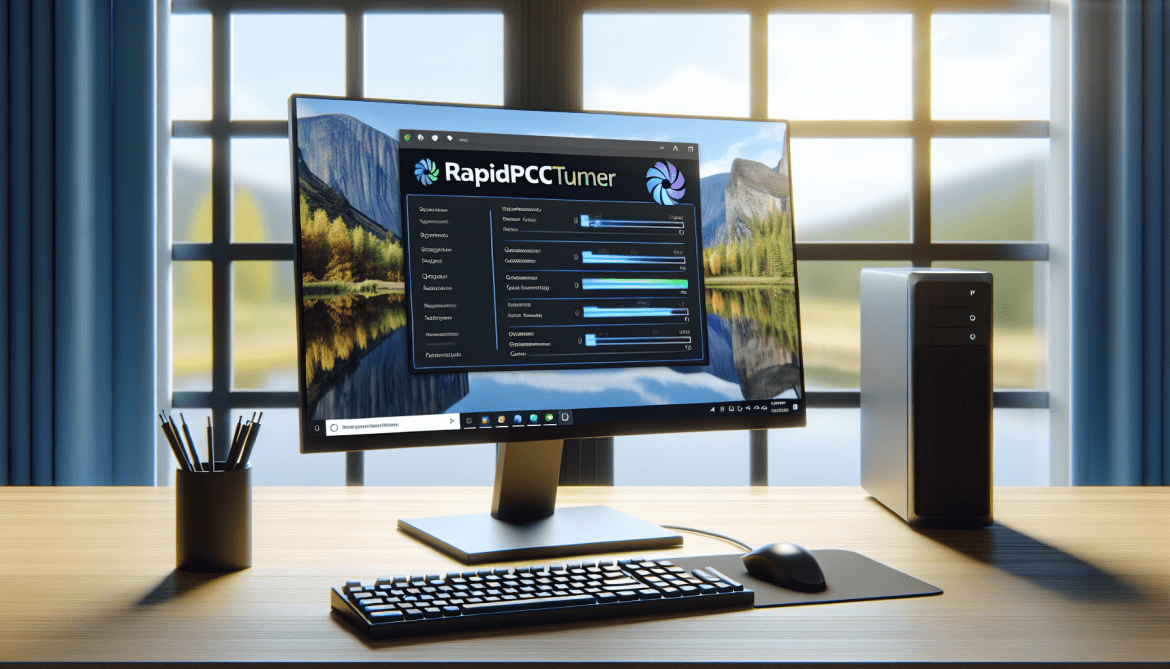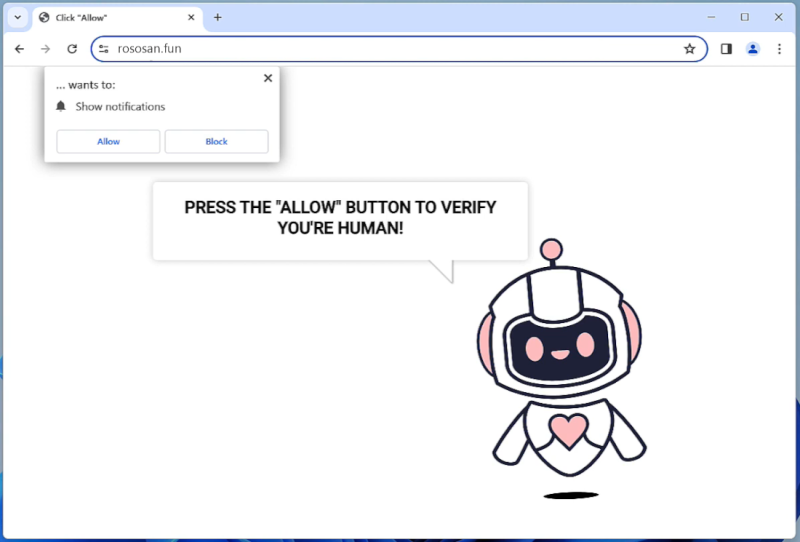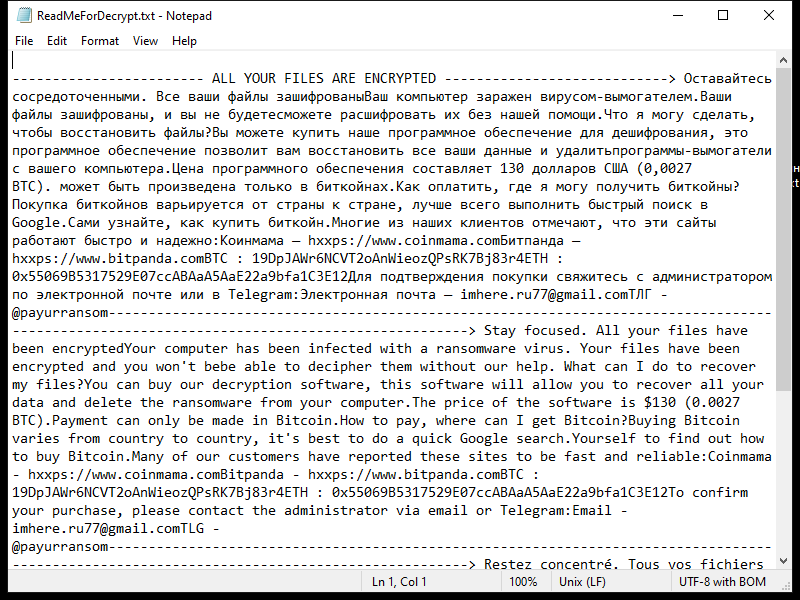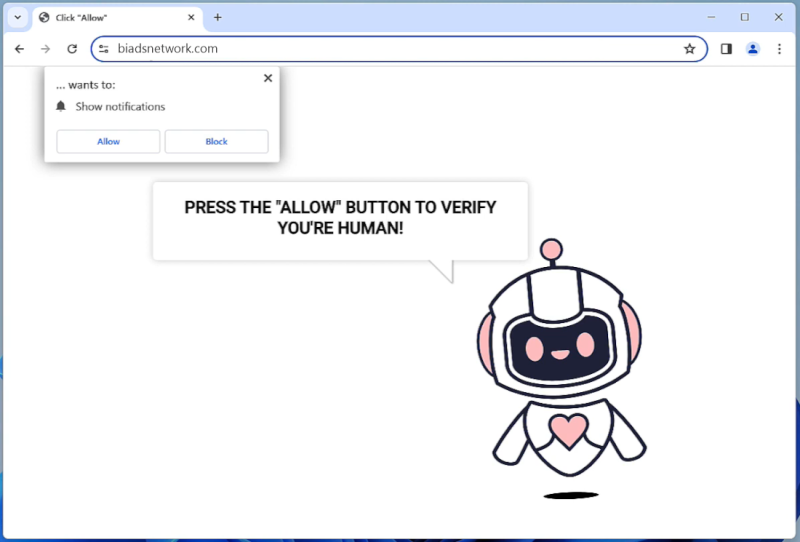Networkspeedflow.com is a malicious website that infects computers by tricking users into allowing browser notifications. Users visiting the site may be prompted with a pop-up message claiming that they need to click “Allow” to access content on the page. However, clicking the “Allow” button actually grants the site permission to send push notifications to the user’s browser.
Once permission is granted, Networkspeedflow.com can exploit browser notifications to display unwanted ads, fake alerts, and other intrusive content. This can disrupt the user’s browsing experience and expose them to potentially harmful websites or scams. Networkspeedflow.com can infect a variety of browsers, including Google Chrome, Mozilla Firefox, and Safari, as well as different devices such as desktops, laptops, and mobile devices. Users should be cautious when encountering pop-ups or notifications from unfamiliar websites and avoid clicking on suspicious links or granting unnecessary permissions to protect their devices from potential malware infections.

